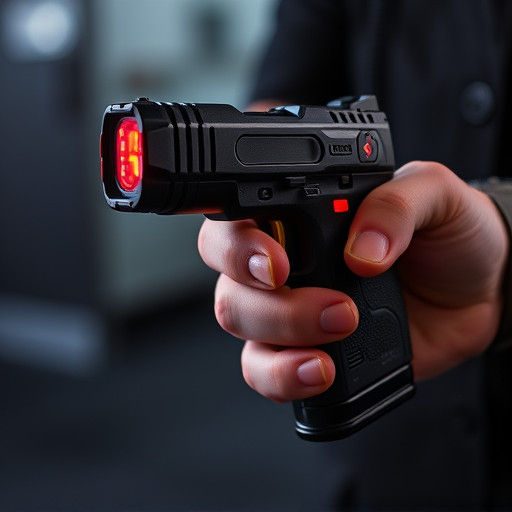Safety technology in stun guns has evolved dramatically, prioritizing user safety with advanced features like intuitive activation switches, GPS tracking, and adjustable output levels. These non-lethal force tools offer individuals enhanced personal protection against potential threats, though legal restrictions vary globally and require responsible handling after proper training.
Understanding Stun Guns: How Do They Work?
Stun guns, also known as electroshock weapons, are a type of safety technology designed to incapacitate an assailant temporarily through the delivery of electrical current. They operate on the principle of overwhelming the body’s natural electric currents, causing muscular spasms and disorientation. When activated, the stun gun emits a high-voltage, low-amperage electrical pulse that disrupts nerve impulses to the muscles, resulting in loss of balance and strength.
These devices typically use two metal probes or electrodes to make contact with the target, either directly through touching the body or indirectly by aiming them at specific areas like the thighs or sides of the neck. The electricity flows from the stun gun, through these probes, into the assailant’s body, creating a powerful shock that can last for several seconds. This temporary incapacitation allows users to escape potentially dangerous situations and seek help if needed.
Safety Features and Technology Advancements
Safety technology in stun guns has evolved significantly over time, incorporating various features to enhance their effectiveness and user-friendliness. Modern stun guns are designed with advanced safety mechanisms to ensure they are only activated when intended by the user, minimizing accidental discharges and enhancing personal safety. These features often include intuitive activation switches, automatic shutdown mechanisms after a set stun duration, and adjustable output levels to suit different situations and users’ comfort levels.
Technological advancements have also led to smarter and more efficient stun guns. Some models now incorporate GPS tracking, allowing users or authorities to locate the device in case of loss or theft. Additionally, smart connectivity features enable users to monitor battery life, receive software updates, and even remotely activate the stun gun through mobile applications. These innovations not only improve safety but also provide users with greater control and peace of mind.
Effectiveness in Real-World Scenarios
Legal Considerations and User Feedback
Legal considerations surrounding safety technology stun guns vary significantly by jurisdiction, with some countries and states permitting their use only for law enforcement or personal protection in specific circumstances, while others allow wider access. It’s crucial for potential users to understand local laws and regulations before acquiring a stun gun, as possession without proper authorization can result in legal consequences.
User feedback on safety technology stun guns is generally positive, with many praising their effectiveness in deterring attackers and providing a non-lethal means of self-defense. However, critics point out issues like inconsistent performance, ease of use concerns, and the potential for misuse or accidental deployment. Thorough research, training, and understanding of the device’s capabilities and limitations are essential to ensure safe and responsible usage.
